A simple recipe for an orange butter or compote.
Take two blood red oranges (in the winter time right before transitioning to spring, approximately as we prepare for the Lunar New Year), peel them and remove the seeds if any are present.
Blend the blood orange pulp in a blender of your choice — we prefer ones that are easy to clean so that the blades remain as sharp as new. Add the juice and pulp from half a green lemon and make sure to squeeze the lemon a few times, so that not a single droplet is unspent unwisely, (considering a mole, spelled m-o-l-e).
Take the mixed fruit and pour into a hot iron pot, quarter to half liter since our juice came to about 500 mL or two cups. Maintain the heat at high while stirring occasionally, and notice the emanating fragrance of citrus, blood red in this case, the parfum steadily rises with the steam. Then put a lid on the pot to enable higher pressure so that the watery mixture steadily solidifies into first a particulate mixture, then a fibrous sugared kind of compote.
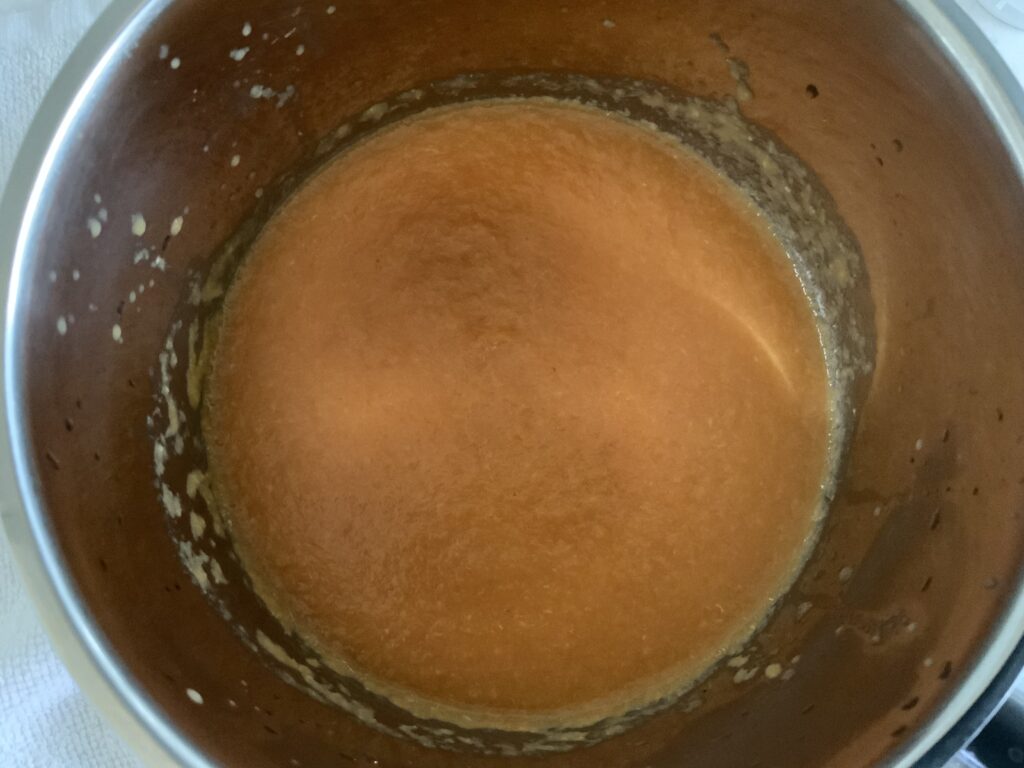
Scoop the finished product into a clean glass jar, washed with boiling hot water and dried with a fine cloth.
Eat with starch of your choice!
With the same batch of blood red oranges marmalade can be produced. The oranges are peeled and the zest, fruit, and membranes collected. Most of the white pith is put aside and could be used in the cooking.
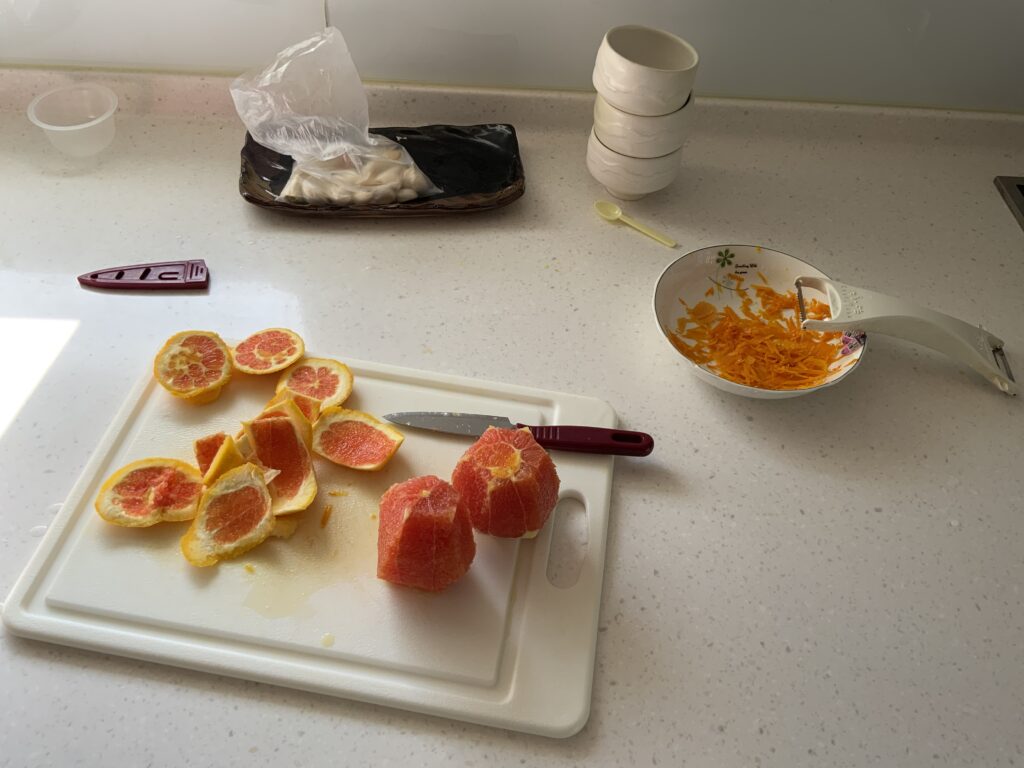
Place the mixture of fruit, zest and membranes in a large iron pot, and turn the heat on high. For this pot of orange marmalade I put in about three cups of water and three cups of brown sugar (white sugar crystallites from Taiwan Sugar Corporation). Once heating commences, I stir the mixture a few times then put the lid onto the pot to pressurize and heat faster.
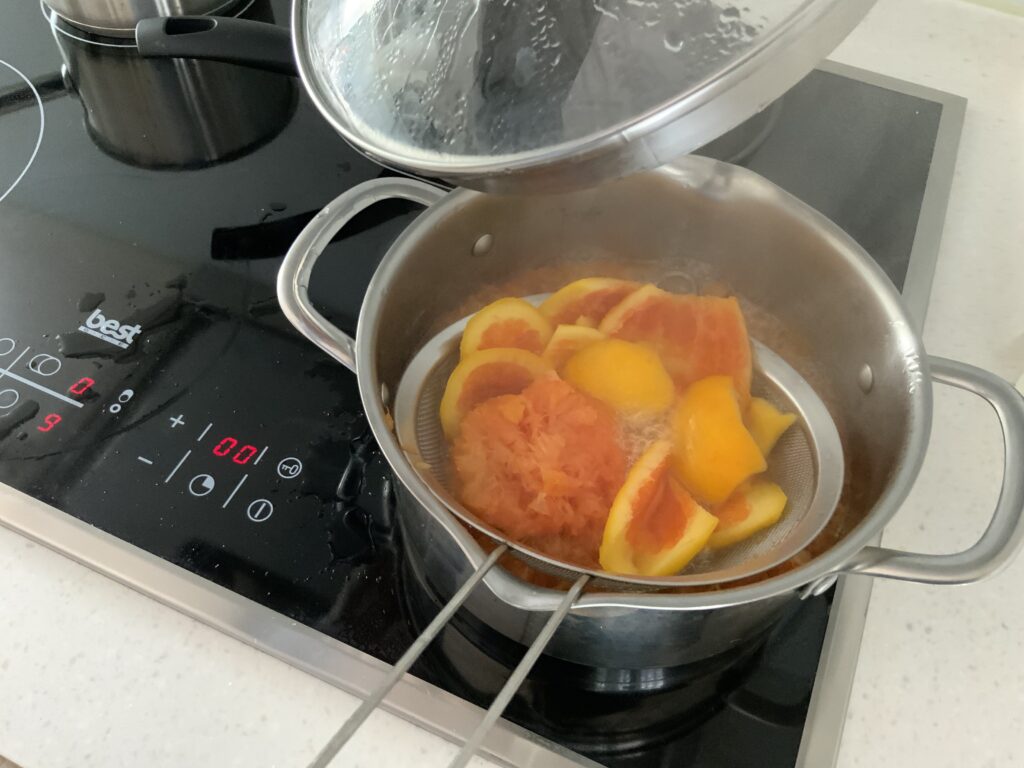
Some recipes call for using a cooking cloth to bag the membranes, skin and pith because within the orange are molecules called pectin, long-chained polymers that are responsible for gelation once properly cross-linked. I used a large metal perforated ladle with fine mesh to hold onto the skin and fruit meat, while the tenderest juicy fruit and zest are inside the pot.
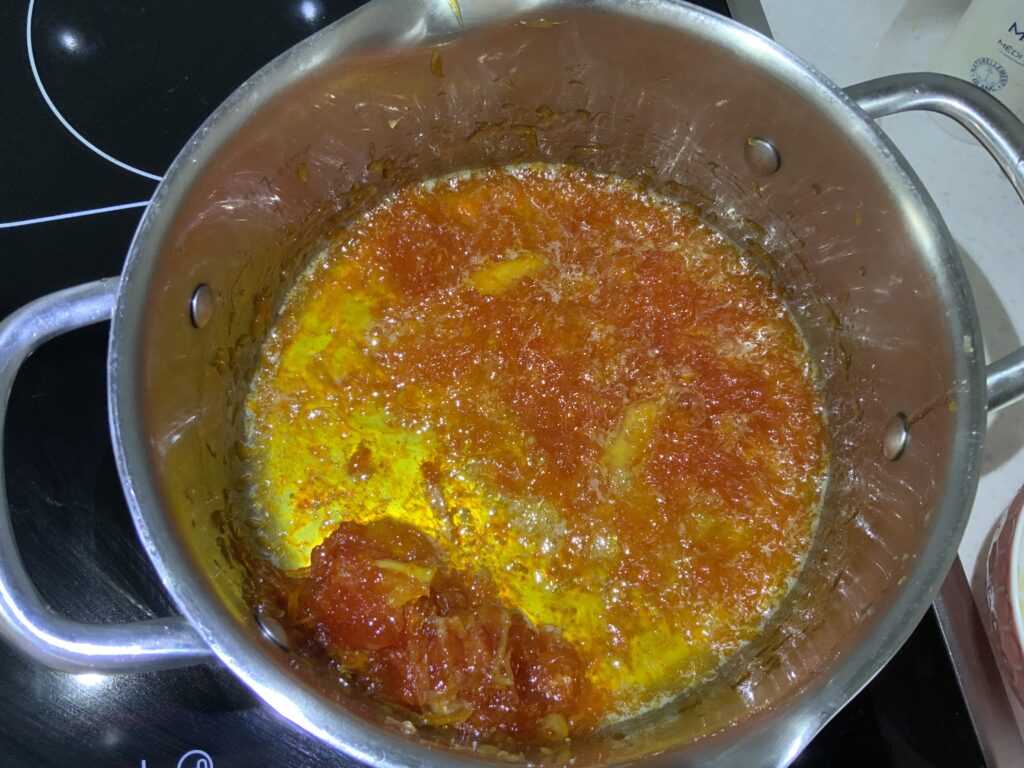
Make sure to reach the highest temperature possible with your stovetop, and bring the concoction to a boil. The goal is to remove most of the moisture and water, which can be aided with two to three tablespoons of table salt, containing potassium iodide (KI) and carbonates of Magnesium. Some other salts have CaP, which might be tasty too.
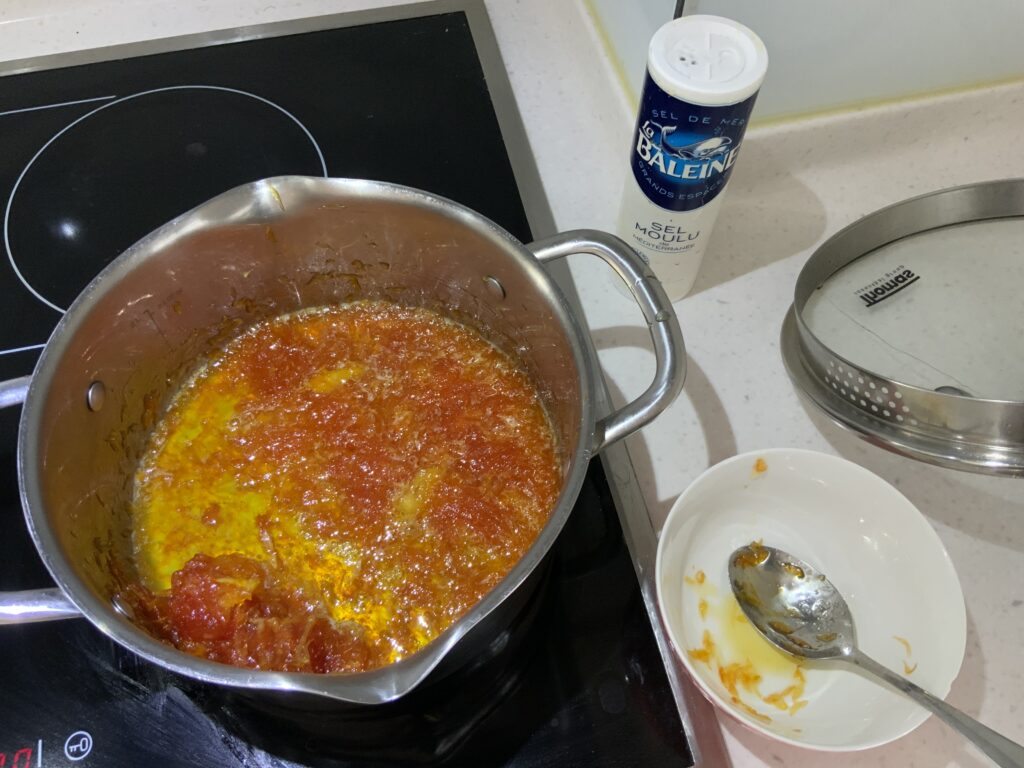
These delicious fruity pastes are collected into sterilized glassware. This is easily achieved by boiling in water the glass containers. Take care not to cool the glass too quickly or cracks may develop.
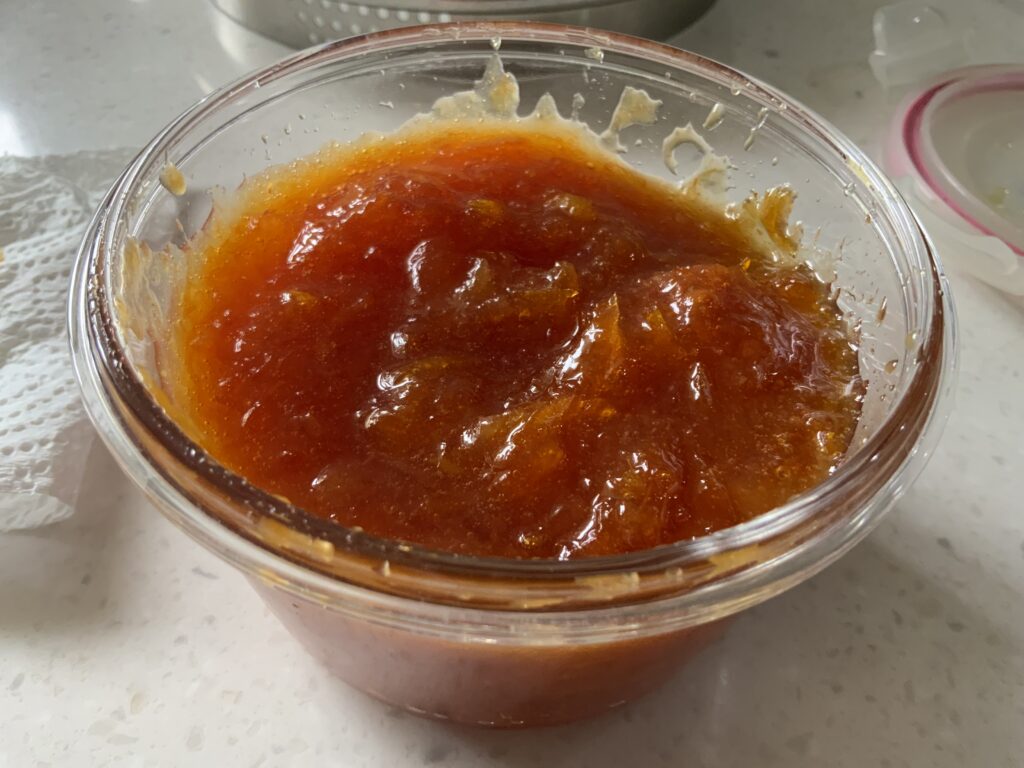
As with the butter compote, have a scoop of marmalade and enjoy!